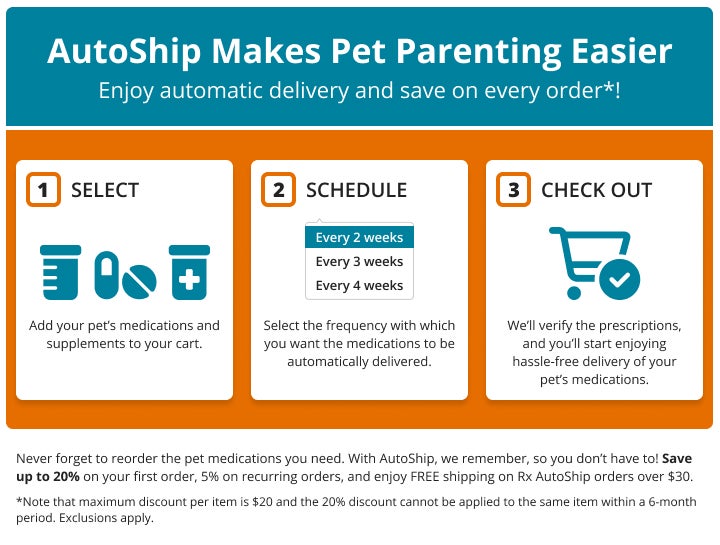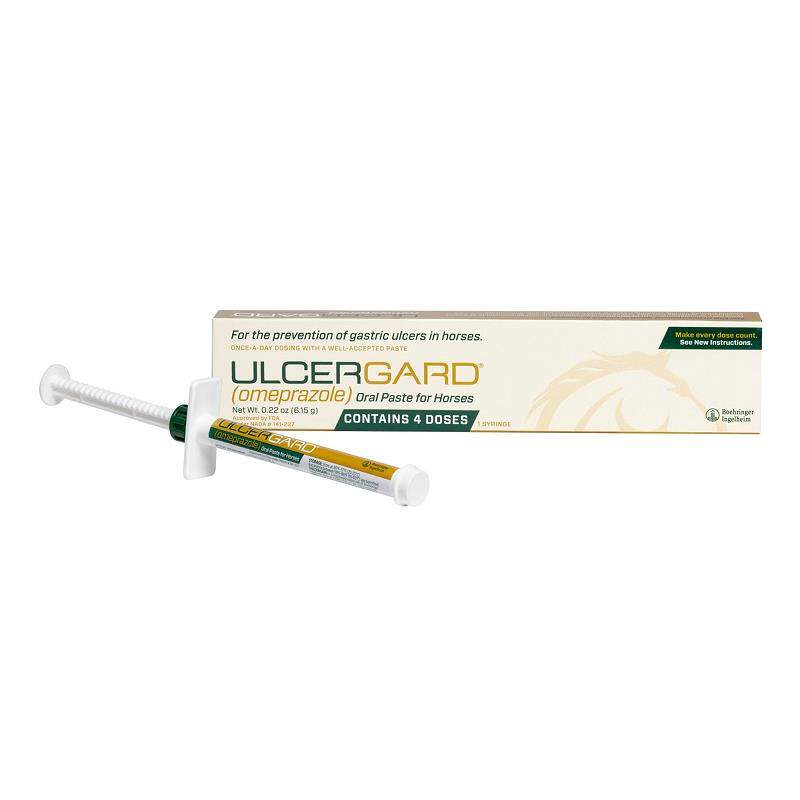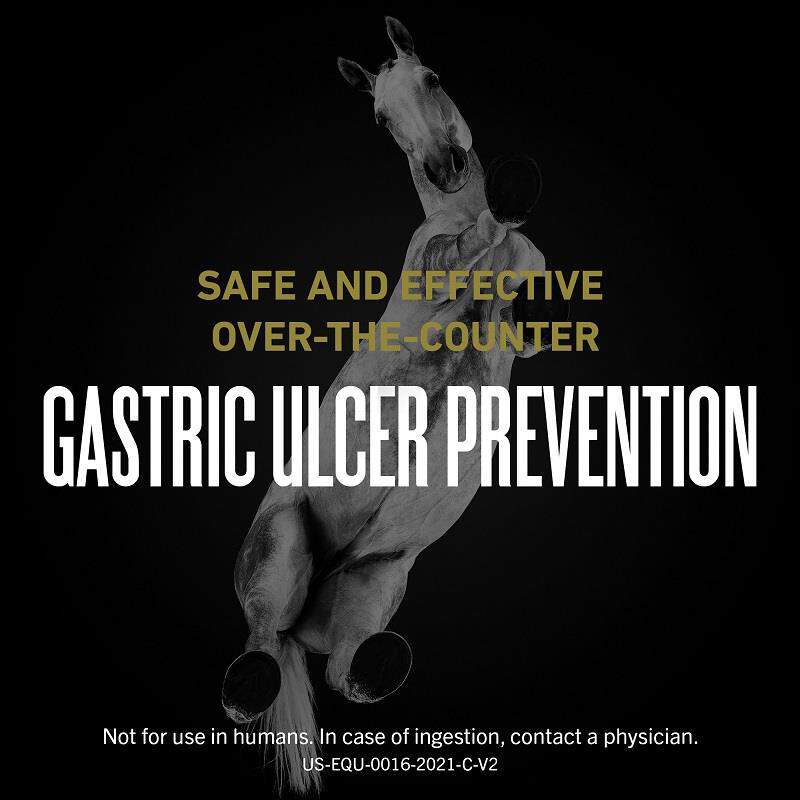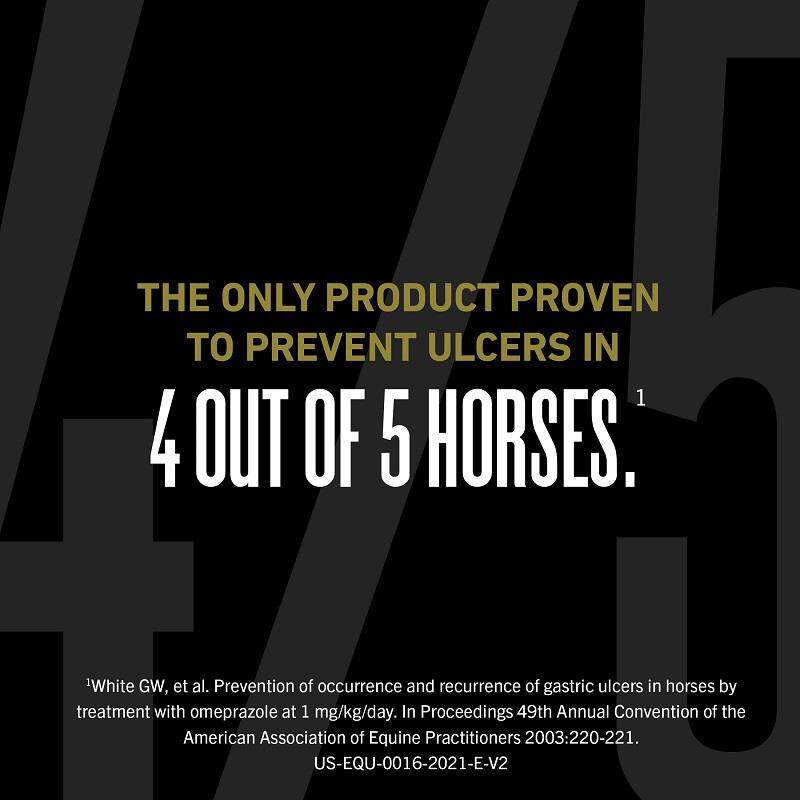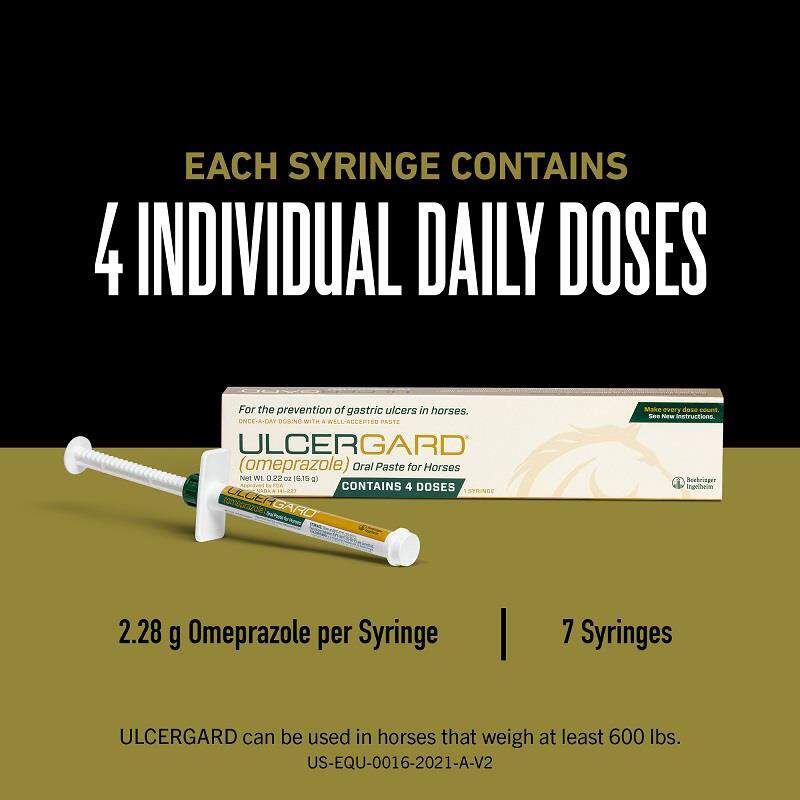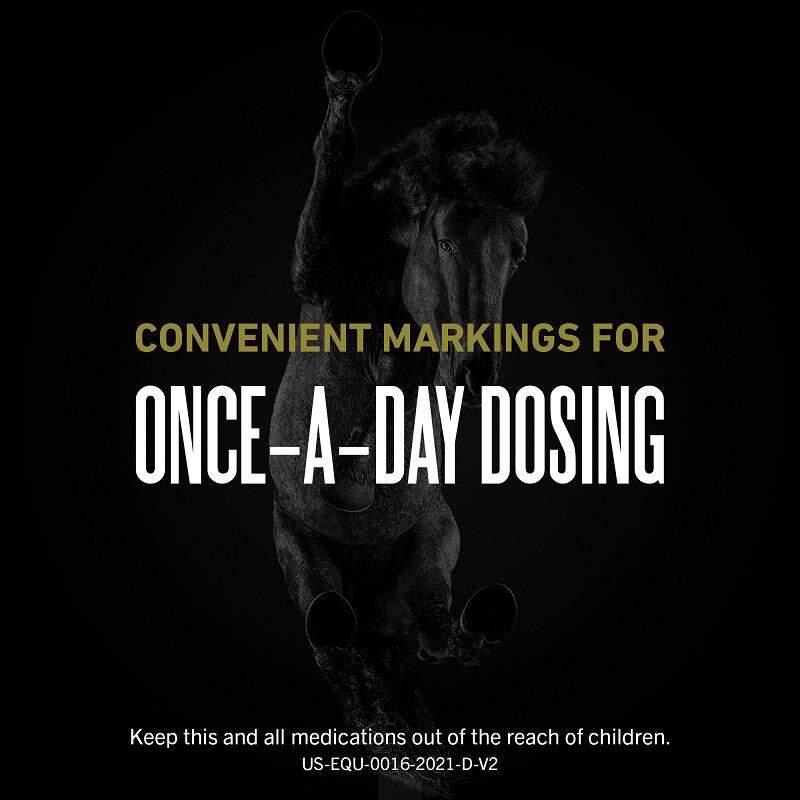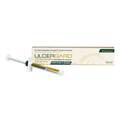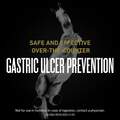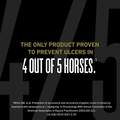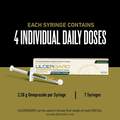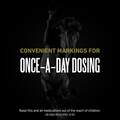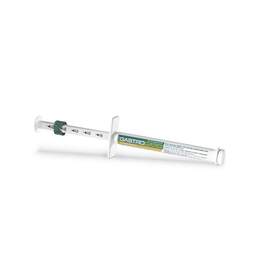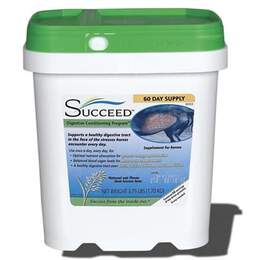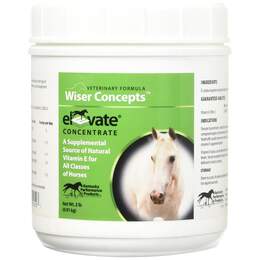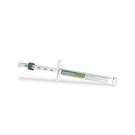ULCERGARD® (omeprazole) Oral Paste prevents stomach ulcers in horses. The active ingredient, omeprazole, has been extensively tested for effectiveness and safety. ULCERGARD® works by reducing acid production in the horse’s stomach. To maintain optimal gastric health, ULCERGARD® should be administered during stressful events or activities that could induce stomach ulcers. Such activities and conditions include, but are not limited to training, racing, showing, traveling, stall confinement, limited turnout or access to forage, and competition.
ULCERGARD® (omeprazole) Oral Paste is a preventative for gastric ulcers in horses weighing at least 600 pounds.
Which animals/pets is UlcerGard for?
For use in horses.
ULCERGARD® (omeprazole) Oral Paste is a unique paste formulation to protect the active ingredient, omeprazole, for adequate absorption. It reduces acid at the source and is proven to prevent gastric ulcers.
ULCERGARD® (omeprazole) Oral Paste has been tested for effectiveness and safety. It reduces the production of acid in the horse’s stomach. To maintain gastric health, administer during stressful event or activities, such as training, racing, showing, traveling, stall confinement and competition.
ULCERGARD® (omeprazole) Oral Paste is well tolerated with no known side effects.
Omeprazole
UlcerGard overdose: What to do?
Contact your closest emergency pet hospital.
What to know before using UlcerGard
Not for use in humans. Keep this and all medications out of the reach of children. In case of
ingestion by humans, contact a physician. Do not use in horses intended for human
consumption.
Each syringe contains 4 individual daily doses for horses weighing 600-1200 lbs.
Boehringer Ingelheim
Stomach ulcers may result in decreased appetite and unwanted behavior, which can directly influence the way in which a horse lives, performs, and trains. This product helps to avoid these issues outright by working to inhibit the development of stomach ulcers.
The minimum recommended dosage is 1 mg/kg per day (0.45 mg/lb). Each syringe contains 4 individual daily doses for horses weighing 600-1200 lbs. Please refer to the following dosage chart for help in determining the correct dose for your horse.
• Less than 600 lbs- Consult a veterinarian
• 600-1200 lbs 1 dose per day
• over 1200 lbs 2 doses once per day.
Syringe Instructions:
1. To set the syringe plunger, while holding plunger, turn the knurled ring on the plunger ¼ turn to the left and slide the knurled ring along the plunger shaft so the side nearest the barrel is at the appropriate daily dose marking, aligning the arrow on the plunger with the notch on the ring, as shown in the pictogram on package insert.
2. Lock the ring in place by making ¼ turn to the right. Ensure it is locked (it should no longer slide).
3. Make sure horse’s mouth contains no feed before administration.
4. Remove syringe tip cover.
5. Insert syringe into the corner of the horse’s mouth.
6. Depress the plunger until it stops at the dose ring.
• The entire dose should be deposited on the back of the tongue or deep in the cheek pouch.
• Horses should be observed briefly to assure no part of the dose is lost or
rejected.
• If any of the dose is lost, re-dosing is recommended.
• Replace cap if any unused doses remain in the syringe
Equine Gastric Ulcer
 Ulcers may be one of the most common conditions a horse can develop, 60 to 90 percent of show and race horses will develop the illness. And horses with a more nervous disposition are bound to have ulcers compared to a calmer and easy going horse. Because there are various causes to equine gastric ulcers we may want to start to understand a little more of how a horse digestive system may work. We as humans stimulate what is called hydrochloric acid when we eat; this is found in our gastric juices to help aid digestion and protect the stomach against the effects of enzymes and acid. The same production is found in horses but unlike humans they do not just develop hydrochloric acid when they eat, but it is constantly being produced. If a horse does not eat, acid builds up in the stomach which will start to irritate the stomach eventually leading to more serious problems.
Ulcers may be one of the most common conditions a horse can develop, 60 to 90 percent of show and race horses will develop the illness. And horses with a more nervous disposition are bound to have ulcers compared to a calmer and easy going horse. Because there are various causes to equine gastric ulcers we may want to start to understand a little more of how a horse digestive system may work. We as humans stimulate what is called hydrochloric acid when we eat; this is found in our gastric juices to help aid digestion and protect the stomach against the effects of enzymes and acid. The same production is found in horses but unlike humans they do not just develop hydrochloric acid when they eat, but it is constantly being produced. If a horse does not eat, acid builds up in the stomach which will start to irritate the stomach eventually leading to more serious problems.
We can start to understand that frequent small meals are required in order to keep the stomach from being empty and causing a less damaging effect on the horses stomach. Such feedings of roughage, the amount and types can also play a role in preventing the increase of stomach acid. The horse’s chewing produces more saliva and by the horse swallowing the saliva helps neutralize stomach acid. Also certain types of medications that may increase the risk of ulcers may be those containing NSAIDS anti-inflammatory or any other medication that may block the production of prostaglandin E2 also known as PgE2 which is a chemical that decreases the acid production therefore when there is a low amount of PgE2 levels in the stomach there is a higher level of acid which lead to ulcers developing.
Read more about this product


 Ulcers may be one of the most common conditions a horse can develop, 60 to 90 percent of show and race horses will develop the illness. And horses with a more nervous disposition are bound to have ulcers compared to a calmer and easy going horse. Because there are various causes to equine gastric ulcers we may want to start to understand a little more of how a horse digestive system may work. We as humans stimulate what is called hydrochloric acid when we eat; this is found in our gastric juices to help aid digestion and protect the stomach against the effects of enzymes and acid. The same production is found in horses but unlike humans they do not just develop hydrochloric acid when they eat, but it is constantly being produced. If a horse does not eat, acid builds up in the stomach which will start to irritate the stomach eventually leading to more serious problems.
Ulcers may be one of the most common conditions a horse can develop, 60 to 90 percent of show and race horses will develop the illness. And horses with a more nervous disposition are bound to have ulcers compared to a calmer and easy going horse. Because there are various causes to equine gastric ulcers we may want to start to understand a little more of how a horse digestive system may work. We as humans stimulate what is called hydrochloric acid when we eat; this is found in our gastric juices to help aid digestion and protect the stomach against the effects of enzymes and acid. The same production is found in horses but unlike humans they do not just develop hydrochloric acid when they eat, but it is constantly being produced. If a horse does not eat, acid builds up in the stomach which will start to irritate the stomach eventually leading to more serious problems.

